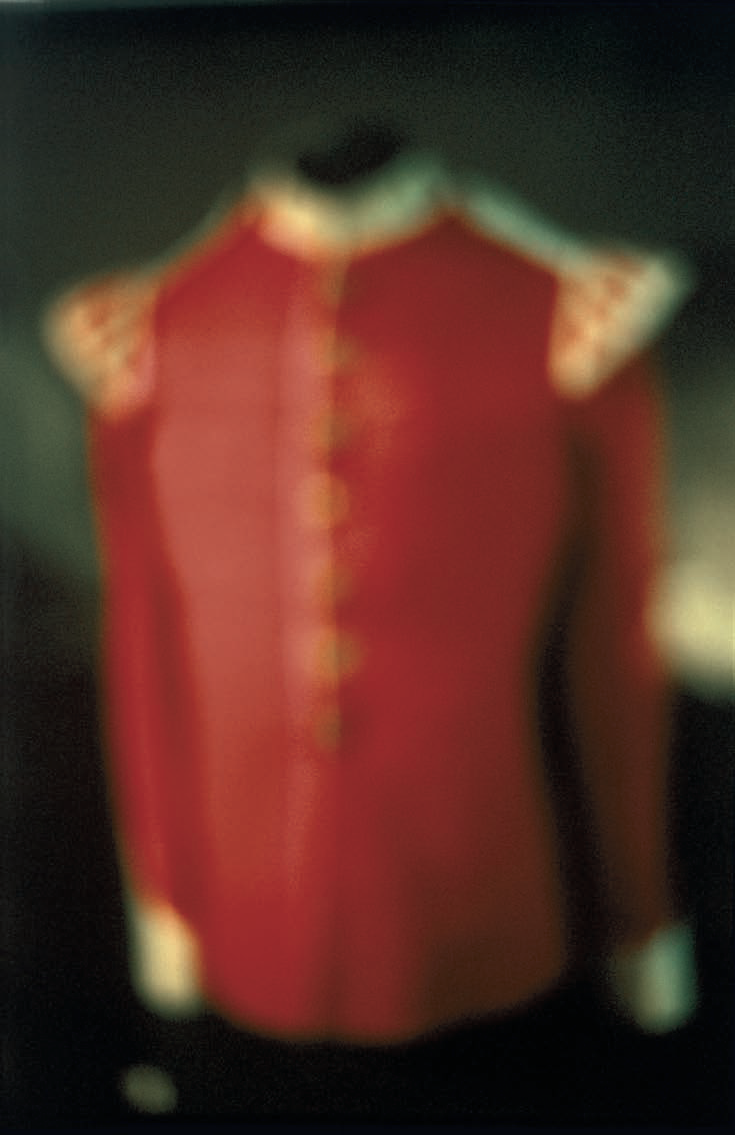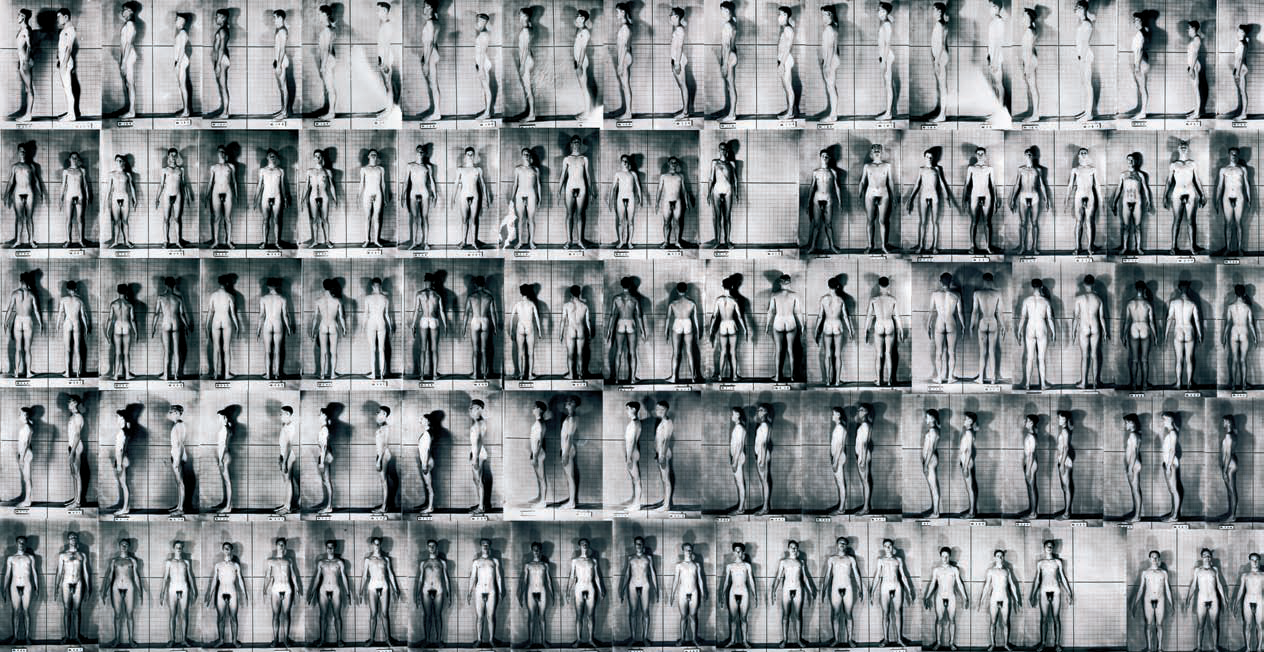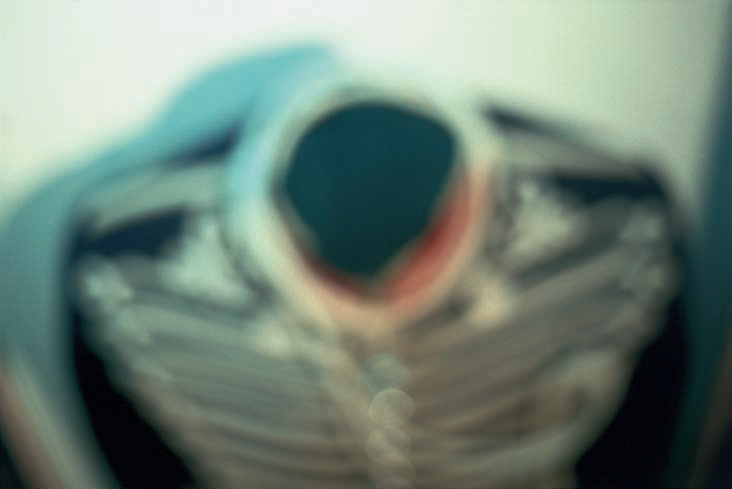The twin themes of male desire and the abuse of power by the military have been constant leitmotifs in the work of artist Hentie van der Merwe. From 1967 to 1993 white males reaching the age of eighteen were required to serve up to two years in the South African Defence Force. “It was an initiation rite into manhood I thought I’d rather miss,” says van der Merwe sardonically. Born in 1972 into an Afrikaans family in Namibia, then known as South West Africa, van der Merwe was in his final year at school when, fortunately for him, compulsory conscription came to an end in Namibia.
Van der Merwe came to South Africa to study art at the University of Witwatersrand in Johannesburg. In his first solo exhibition in 1997, van der Merwe revisited a South African Defence Force exercise from World War II in which photographer Hugh MacFarlane had photographed hundreds of soldiers for “identification” purposes and to evaluate their physical status. Each soldier stood naked against a tiled wall on a small numbered podium. At once anonymous, vulnerable, and homoerotic, the photos carried what critic Brenda Atkinson has described as “a strangled subtext of discipline and desire.”
Van der Merwe lined the walls of a small room at Johannesburg’s Generator Art Space, a project space for experimental art under the aegis of the Africus Institute of Contemporary Art, with the original photographs sourced from the Gay and Lesbian Archives at the University of Witwatersrand, part of a vast collection of photographs of naked males by MacFarlane acquired by the Archives. Entrance to the room was blocked by a thick glass screen with text informing the viewer that the photographs had been kept by the photographer, long after the perceived need for them was over.
The connection between homoeroticism and military machismo was investigated further by van der Merwe with a series entitled Trappings (2000–2003) photographed at the National Museum of Military History in Johannesburg.
Tightly fitting, emphasizing a broad, manly chest and a narrow waist, a dress military uniform is sexy both for its ritualized style and for the power it confers on the wearer. But fine clothes do not always make the man. The dress uniform can also mask that wearer’s abuse of such power underneath a veneer of trust and authority.
Van der Merwe’s images of the richly colored red, green, or blue uniforms with their braided trimmings are slightly blurred, presented as if through a scratched lens of moral ambiguity. As van der Merwe suggests, they are preserved as symbols of generations of proud military traditions by the soldiers and museums alike, but they are nonetheless signifiers of all the atrocities committed in the name of the State.

Trappings: “Cape Mounted Rifles” (Dukes), “Bandsman” (1913–1926) 2000–2003
Cibachrome print, singular, and framed behind glass
180 x 120 cm
Images courtesy of the artist and the Goodman Gallery, Johannesburg
© Hentie van der Merwe

Untitled (portraits by Hugh MacFarlane) 1997
Mounted archival photographs
Installation detail, Generator Art Space, Johannesburg
Images courtesy of the artist and the Goodman Gallery, Johannesburg
© Hentie van der Merwe

Trappings series: “Transvaal Horse Artillery” 2000–2003
Cibachrome print, singular
80 x 120 cm
Images courtesy of the artist and the Goodman Gallery, Johannesburg
© Hentie van der Merwe